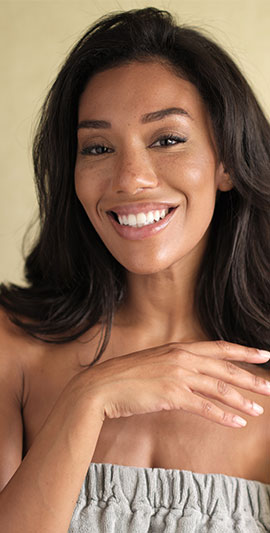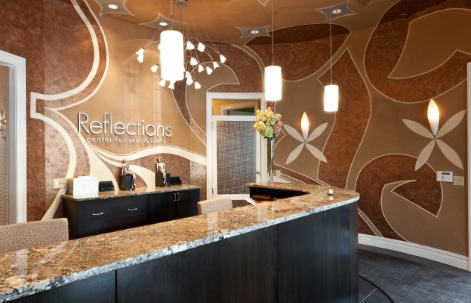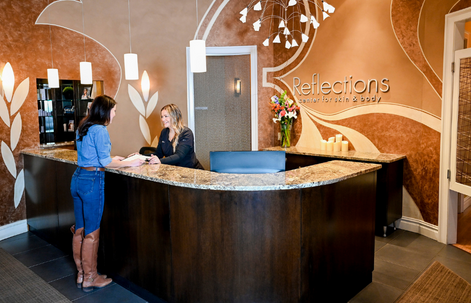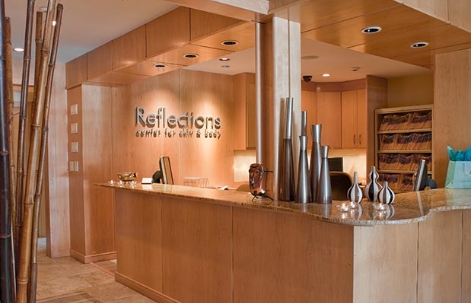In a huge market of catchy-sounding trends, prejuvenation can seem like just another gimmick. This trend, however, is worth paying attention to because it represents a shift in the way we address aging and the treatments that go along with it. If you’ve never heard of prejuvenation, it’s the opposite of rejuvenation— meaning, we start earlier in life to prevent the need for extensive rejuvenation procedures or surgeries later on. For the previous generations, rejuvenation meant surgeries like the facelift to address signs of aging. Now, prejuvenation means smaller, non-surgical proactive treatments that come in many different forms.
It can feel overwhelming to think of the plethora of treatments you might feel like you need to prevent aging, but it can be a lot simpler than that. With a well-rounded treatment plan of low-key treatments in the office supplemented by proper at-home skin care, you can find great results. Here’s a step-by-step guide to getting started on prejuvenating to save yourself the hassle later.
1. CONSIDER TARGETED TREATMENTS
Targeted treatments are a very effective way to prevent signs of aging and improve skin quality. These treatments may include physician-grade skincare treatments to address specific things like mild pigmentation, roughness, or aging signs in certain places. Chances are, you won’t need hefty or extensive treatments. Lasers like the Clear + Brilliant® can offer great results without downtime. You can opt for these low-key treatments as a package to keep up your results and gradually integrate deeper treatments as needed. These can include lasers like the Fraxel® Restore Dual for deeper textural remodeling, or the Vbeam® and Q-Switched lasers for more extensive pigmentation.
Although many patients consider injectables to be a first step in professional treatments, we regularly recommend laser treatments as a starting point. This is because they can function on a sliding scale according to your needs and goals while also providing effective treatment for a variety of concerns. We generally recommend Botox® or Botox alternatives as a preventative treatment at this stage to prevent some of the beginning signs of aging like crow’s feet and forehead lines. However, this should be coupled with some prejuvenating skincare treatments like lasers or medical-grade peels.
2. BUILD NEW COLLAGEN
Around your mid-20s and early 30s, your body’s production of collagen begins to decrease. Some studies have shown this can be as much as 1-2% each year. This means it’s important to begin opting for treatments that build new collagen and increase your skin’s cell turnover in tandem with your at-home care. Some of the best options for this include microneedling, which uses collagen induction therapy (CIT). Microneedling works by introducing micro-channels in the skin which jumpstart the skin’s wound-healing mechanisms, producing new collagen. Microneedling is a great starting point and can be augmented by other techniques like radiofrequency (RF microneedling).
Although your treatment package will depend on your goals and unique skin concerns, we recommend that most patients begin with a combination of Clear + Brilliant laser treatments and microneedling 1-2 times per year to keep up collagen production and combat volume loss.
3. TAKE STOCK OF YOUR SKINCARE
If you haven’t optimized your skincare regimen, now is a good time to start. Good basics to have on-hand are a gentle cleanser, sunscreen, active ingredients, and the right moisturizer for your skin. Although the frequency of your active ingredient treatments might vary, daily sunscreen use is essential. It can prevent sun damage, which is a huge contributing factor to wrinkles later on. And don’t skimp on the SPF— many dermatologists recommend you use a separate sunscreen rather than relying on SPF included in many cosmetic products. You should aim for a broad-spectrum sunscreen of SPF 30 or higher for adequate protection during your day-to-day activities.
When it comes to active ingredients, you’ve got a lot of options. Two most effective treatment options are retinoids, vitamin C, growth factors and peptides. Retinoids can do a lot for your skin. Among many things, they make sure that cell turnover and collagen production work more effectively. Unfortunately, they can require an adjustment period, and their strength has to be tailored to your skin. Vitamin C can help brighten the skin and reduce pigmentation with regular use. Growth factors and peptides are important in keeping your skin effective at regenerating itself and the collagen that supports it, meaning they can be extremely beneficial in maintaining results from your treatments or simply maintaining your skin’s youthful properties in general. They can also help repair sun damage and stimulate regrowth. If you’re wondering where to start with the skincare regimen and products are best for you, our cosmetic physicians can help.
4. INJECTABLES
There are two types of injectable treatments that can be beneficial in preventing signs of aging when paired with some of the above treatment options. The first is neuromodulators like Botox® or Botox alternatives, which can effectively relax existing wrinkles and prevent new ones from forming. Botox® is effective because it blocks neural signals, preventing muscles from moving. Movements in the face can cause wrinkles to form over time, and halting this process means you can more effectively treat wrinkles using other treatment options like lasers or skincare treatments. You’ll need to opt for retreatment every three to six months, however.
Another injectable option is dermal fillers. Unlike Botox®, these options provide volume in areas that commonly lose support over the course of aging. Different types of fillers exist that can be better suited to different goals— hyaluronic acid fillers like Restylane® or Juvéderm® simply provide volume under the surface of the skin to fill out wrinkles and folds so they can be more effectively treated with skin tightening treatments or laser options. Alternatively, fillers like Sculptra® can help generate new collagen at the same time as providing volume. Although the length of your results will depend on your specific injectable, dermal fillers last for an average of one year or so.
THE BOTTOM LINE
Prejuvenation can seem like a monumental effort, but it’s important to remember that prejuvenation looks different for everyone. The best treatment plan for you will depend on factors like how early you start treatments, your skin’s current condition, your preferences, and your goals for anti-aging. And if it feels like it’s too late to start, then remember that you’ve got options! Because of the constant innovation in non-surgical anti-aging treatments, there’s hope that the need for surgery later in life can be avoided with the best in prejuvenating treatments and at-home care. Despite what you might see on social media, however, it’s important to create an effective treatment plan with the help of a cosmetic physician with expertise and experience in prejuvenating techniques.
SCHEDULE A CONSULTATION
The best way to get started on prejuvenation is through a consultation with our cosmetic physicians who can help you understand your options. Whether it’s recommending the best products for at-home care or a treatment plan that fits you and your lifestyle best, we can make sure your surgical considerations remain far off for years to come. To get started, contact our Martinsville and Livingston offices by calling or filling out our online form.







